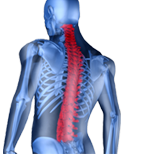Joint Injection
Joint Injections of the extremities, such as the knees, shoulders, hips, ankles etc. are used to treat the pain that comes most commonly from arthritis. The joints of the extremities can undergo degeneration from constant wear-and-tear (osteoarthritis), from injury (chronic sprains) or from disease (rheumatoid arthritis), thus leading to chronic inflammation and pain. If the inflammation is severe and left untreated, the joint can become permanently damaged from erosion and destruction of the cartilage lining that lubricates the moving parts of the joint.
The biggest joints of the extremities are the ones most commonly involved with arthritis, such as in the shoulders, hips and knees. Arthritis can also involve the smaller joints, such as the ankles, wrist and finger joints. The medicine injected (corticosteroid) reduces the inflammation and swelling inside the joint space. This in turn treats the pain long term.
Procedure Overview:
The procedure is usually done in an office setting. You may be sitting or lying down in order to be comfortable. This will allow the physician to palpate and to identify the joint space where the needle will be inserted. The entry point may be marked with a pen. A special alcohol spray (ethyl chloride) or Betadine may be used to clean the skin over the marked site. This spray will also temporarily numb the area by freezing it so that you will barely feel the needle point piercing through the skin as it enters the joint space.
Once the needle is properly positioned inside the joint, the injection is then performed using a mixture of a local anesthetic (Lidocaine or Bupivacaine) and an anti-inflammatory agent (corticosteroid). It is the corticosteroid medication that reverses and controls the inflammation of arthritis that causes joint destruction and pain. Sustained, long-term relief usually is achieved after a series of injection treatments.
Procedure Details:
Will you be asleep for the procedure? Since this is only an office-based procedure, similar to a flu shot or an acupuncture session, there is no need to undergo sedation. You will be able to go home and drive by yourself right after the procedure. How long will the procedure take? Normally, a Joint Injection procedure takes no more than 5 minutes.
Before the procedure:
You may need to stop taking certain medications several days before the procedure. Please remind the doctor of all prescription and over-the-counter medications you take, including herbal and vitamin supplements. In particular, you should temporarily stop taking for at least 10 days before the procedure date, any medication that can cause unnecessary bleeding: Aspirin, Vitamin E, arthritis medications like Advil, Ibuprofen and blood thinners like Coumadin, Plavix, Trental, etc. The doctor will tell you if and when you need to discontinue the medications.
It is very important to tell the doctor if you have asthma, had an allergic reaction (i.e. hives, itchiness, difficulty breathing, and any treatment which required hospitalization) to any local anesthetic agent used in the past, such as Novocaine or Lidocaine. Tell the doctor if you develop a cold, fever, or flu symptoms before your scheduled appointment.
After the procedure:
Icing for 15 to 20 minutes several times later on the day of the injection is recommended, along with easy range of motion exercises of the joint. You may return immediately to work or regular activities after the injection. You may drive, although some people feel less nervous if they know they have someone along to drive them home. You should continue any physical therapy sessions already scheduled.
You may be sore over the treated areas for the first 24 to 48 hours. If any unusual redness or swelling or warmth occurs at the injection site, notify the physician. You may continue taking all of your regular medications. It may take a few days for the corticosteroid medication to start working and you should notice long-term pain relief starting to work by then.
Procedure Risks:
The risks, although infrequent, include: Allergic reaction to the medications used; Nerve damage; Bruising or infection at the injection site. If you experience persistent pain or numbness in the area of the injection site after the normal healing period (usually 3-5 days), you should call the doctor right away.



